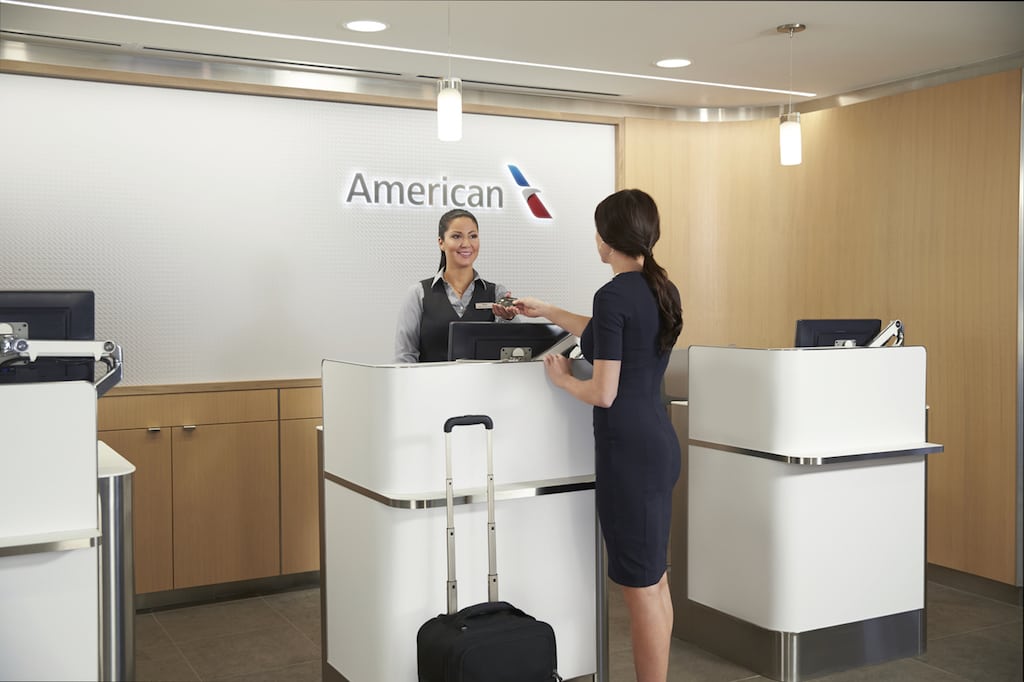Skift Take
American Airlines President Robert Isom said customer satisfaction may be declining because the airline has not been as reliable as it should be. Is that the entire problem?
For the first time in recent history, a key American Airlines customer satisfaction metric dropped, year-over-year, an executive admitted Thursday.
According to American’s surveys, fewer customers were “likely to recommend” the airline to friends, relatives and colleagues in 2018 than in the previous year. “We weren’t pleased,” American President Robert Isom told investment analysts, declining to share information about the airline’s net promoter score trends.
What’s the problem?
Well, America’s biggest airline frustrated some of its customers in 2018, with many complaining about reduced legroom in economy class, tiny bathrooms, sometimes spotty Wi-Fi, and inconsistent service delivery. But speaking Thursday on the airline’s fourth quarter earnings call, Isom, an operations expert, blamed something else. He said the airline irritated customers last year because it wasn’t as reliable as it should have been.
“We know the biggest point of concern and issue with our customers,” Isom said. “They want a reliable airline. They want to be certain they get what they pay for.”
All that will change soon, he promised. Isom told analysts American is committed to better reliability by improving on-time performance, becoming more efficient at turning aircraft between flights, and reducing the number of jets out of service. He said American is making progress, noting that in December, American had 25 percent fewer mainline jets out service than in the previous year.
But there’s plenty of work still to do.
In 2018, through October, the last month for which data is available, American was seventh in on-time performance among 10 U.S. airlines, a metric that includes American Eagle flights. Its on-time arrival rate was six points lower than Delta’s and one below United’s.
During the same period, American canceled 1.5 percent of all its branded flights, far more than Delta, which canceled 0.2 percent of departures. United’s cancellation rate was 0.5 percent. Only Hawaiian and Frontier cancelled a greater percentage of flights.
“We didn’t perform as well as we wanted to in 2018, Isom said. “We expect to reverse that very quickly.”
The Product
What about the other stuff?
Some customers may choose an airline based on-time performance or completion factor, which measures cancellations, but many also decide based on product. Might American have a product deficiency that has led declining scores?
Isom said no, pointing to American’s investments in flat-bed business class seats, premium economy seats, airport clubs, improved WiFi and new streaming entertainment on narrowbody aircraft.
“It’s certainly not due to the product.” Isom said. “People are very pleased with what they’re getting in terms of service and in terms of the amenities and fleet and airports. But if you’re not as reliable as you should be, as you want to be, that has a negative impact overall.”
He made no mention of American’s new Boeing 737 configuration, nicknamed Project Oasis, which has six more seats than United puts on the same plane. American has said the extra seats help it better compete with discount airlines, but for the most part, customers don’t like the dense configuration. Blogger Gary Leff, an American loyalist, calls the planes “torture tubes.”
A Gap
Whether it’s from reliability or product, there is some evidence customers are preferring Delta over American. Or at least they’re paying more to fly Delta, America’s most profitable airline. (It produced almost $4 billion in net income last year.)
Wall Street analysts follow total-revenue-per-available-seat-mile, or TRASM, closely, allowing them to compare unit revenue among airlines. The metric is a gauge of how much an airline makes flying one seat for one mile.
Last year, American’s TRASM was 15.79 cents, up 2.4 percent, year-over-year. Delta, meanwhile, last week reported TRASM of 16.87 cents for 2018.
American CEO Doug Parker said much of the gap, which is widening, is a function of the nuts-and-bolts of the airline business, rather than the customer-facing product.
“The fact that our revenues didn’t perform as well as some of our peers in 2018 is largely [based on] where we fly,” Parker said, blaming American’s big footprint in Latin America, where business is tough at all airlines.
Still, Parker noted the airline is concerned the revenue chasm widened in 2018. He acknowledged Delta is ahead, not on product, but on the ability to merchandise it. He said American will catch up this year.
American executives said they have more than $1 billion in cost and revenue initiatives under way, including growing the Dallas/Fort Worth hub, the most profitable in the system, and tweaking some routes in Chicago and Phoenix.
“I did want to let our investors know that what we saw in ’18, as our RASM declined versus our competitors for the first time in a few years, wasn’t something that we expect to continue,” Parker said.
The good news is that American is still generating solid profits. In 2018, it produced a full-year net profit of $1.4 billion, it said Thursday.
The Daily Newsletter
Our daily coverage of the global travel industry. Written by editors and analysts from across Skift’s brands.
Have a confidential tip for Skift? Get in touch
Tags: airline innovation, airline passenger experience, american airlines, legroom, passenger experience
Photo credit: A customer speaks to an agent at an American Airlines club. American has made investments in many of its lounges. American Airlines
